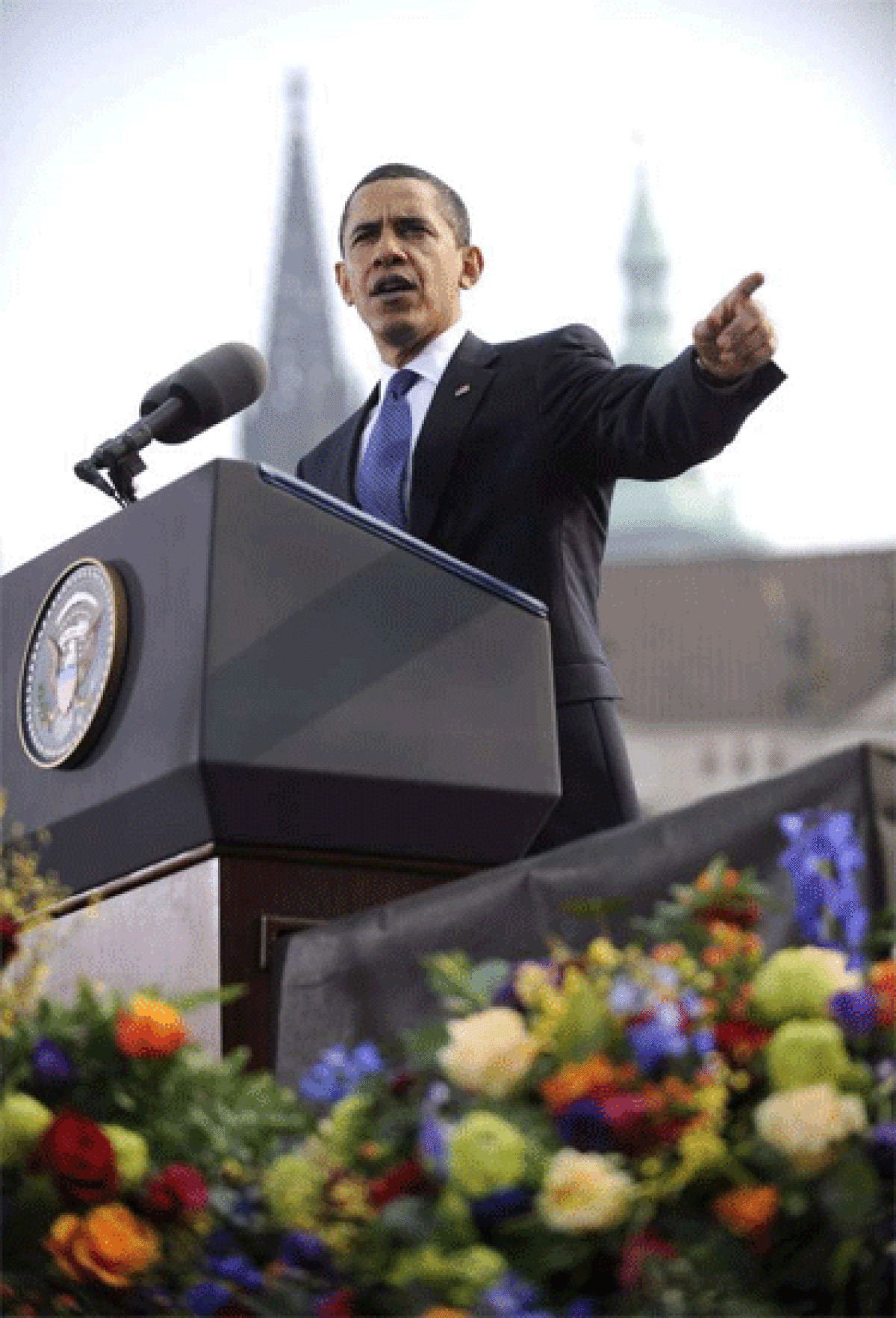The nuclear bomb we don’t need

- Share via
The Soviets put guns before butter, but we put almost everything before guns.”
—Margaret Thatcher, January 1976
When Margaret Thatcher made the above observation in a speech that earned her the title “Iron Lady” from the Soviet army newspaper, she noted that the Soviet Union was spending 20% more each year than the United States on military research and development, 25% more on weapons and equipment and 60% more on strategic nuclear forces. In Central Europe — the front line of the Cold War — Soviet forces and those of its Warsaw Pact allies outnumbered NATO’s by 150,000 personnel, nearly 10,000 tanks and 2,600 aircraft.
Today, there is no Soviet Union, no Warsaw Pact and not one Russian soldier, tank or aircraft in Central Europe. And the defense spending gulf that was cited by Thatcher is dramatically reversed. The U.S. now spends 11 times as much as Russia and more than the next 15 countries combined.
As President Obama prepares to unveil a nuclear weapons policy initiative for his second term, no one is suggesting that the United States should slash defense spending to Russian levels. Defense cuts of that size would be inconsistent with the national interests of America and its allies. But policymakers on both sides of the Atlantic ought to be more inclined than they have been to trim defense programs tailored for a Cold War that has been over for two decades, in particular during an era of sequestration in Washington and austerity in Europe.
Enter the American B61 nuclear bomb — a true test case in both a “guns versus guns” and “guns versus butter” analysis.
Let’s start with the guns.
Throughout the Cold War, thousands of tactical nuclear weapons — short-range nuclear artillery shells, missiles and bombs — were deployed by the United States to deter the Soviets from exploiting their advantages in Europe to mount a lightning attack.
It worked. After the Soviet Union collapsed, President George H. W. Bush ordered the return of almost all U.S. tactical nuclear weapons, leaving only a few hundred air-delivered gravity bombs — the B61 — in European bunkers.
Over the last 20 years, the military rationale for continuing these deployments has evaporated. During a briefing in 2010, the vice chairman of the U.S. Joint Chiefs of Staff, Gen. James E. Cartwright, stated that U.S. tactical nuclear bombs in Europe did not serve a military function not already addressed by U.S. strategic and conventional forces. In the U.S. and allied militaries, you have to look hard to find a dissenting voice.
Politically, however, there are still voices that argue that even a bomb with no military utility is “reassuring” to certain allies, and that storing this artifact in European bunkers and maintaining allied aircraft capable of dropping this bomb is a valuable demonstration of NATO “burden sharing.” Moreover, these proponents are prepared to pay — or rather, have the U.S. pay — $10 billion to modernize and store the B61, with hundreds of millions of German, Italian, Dutch and Belgian euros and Turkish lira spent on base security and upgrades to NATO aircraft.
Wouldn’t it be more reassuring and wiser burden-sharing to spend this money on weapons and capabilities that are relevant to the threats NATO faces today? Indeed, why would allies be reassured by an investment that provides no real military capability and no modicum of deterrence beyond that already provided by the U.S., Britain and France, each of which has nuclear arsenals capable of obliterating any adversary?
When allocating limited defense resources against real defense priorities, including Afghanistan, Libya, Mali, Syria, nuclear proliferation, terrorism — today’s “guns versus guns” measurements — the B61 simply doesn’t pass muster.
What about the “guns versus butter” test?
If Americans understood that their government plans to spend about the same amount of money this year, $537 million, on the B61 bomb as it will spend on Alzheimer’s research, while financing nearly three-quarters of NATO’s military spending, the B61 would deservedly become a dead man walking.
So who will make this case? Four American statesmen — George Shultz, William Perry, Henry Kissinger and Sam Nunn — who in a landmark 2007 Op-Ed article called for “eliminating short-range nuclear weapons designed to be forward deployed” — laid the foundation. Since then, a number of European senior statesmen — including defense and foreign secretaries across the political spectrum — have echoed their call.
Obama should connect the dots as part of an initiative to implement the ambitious agenda for nuclear threat reduction he laid out in Prague four years ago, which was endorsed by NATO. Or even better, maybe it will be a European leader who has the iron to seize the initiative and call attention to the obvious: In today’s Europe, tactical nuclear weapons make no sense.
Steve Andreasen, the director for defense policy and arms control on the National Security Council staff from 1993 to 2001, is a consultant to the Nuclear Threat Initiative in Washington and teaches at the University of Minnesota’s Humphrey School of Public Affairs.
More to Read
A cure for the common opinion
Get thought-provoking perspectives with our weekly newsletter.
You may occasionally receive promotional content from the Los Angeles Times.









